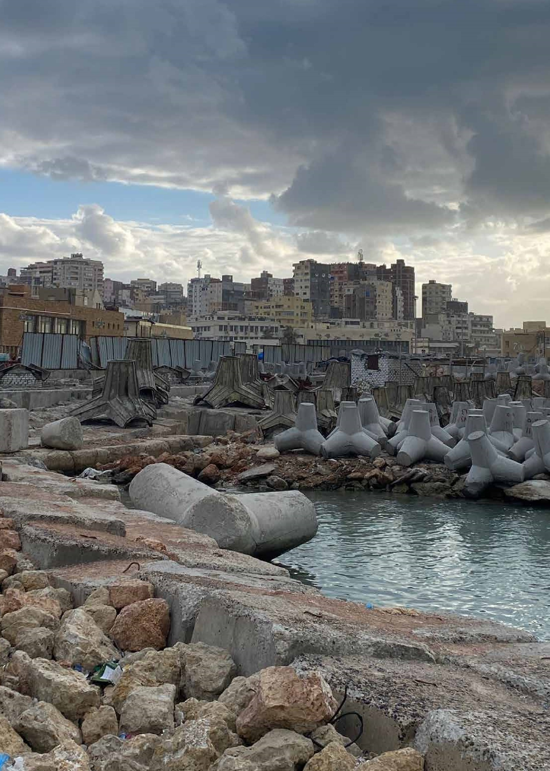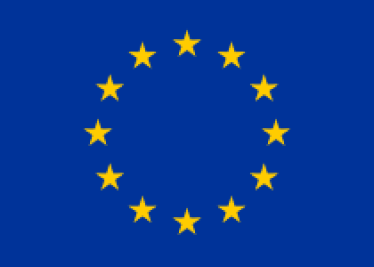School for Sonic Memory – A look back at our artists’ residence in Alexandria
As part of the “(Re)activating Common Urban Imaginaries” project, Theatrum Mundi and Onassis Stegi are producing a pluri-disciplinary nomadic residency program exploring sound, memory and trans-Mediterranean resonances called the School for Sonic Memory. Together, and in collaboration with local artists, urbanists and researchers, six nomadic artists will form a ‘school’ for sonic memory, investigating the ways that three cities across the Mediterranean resonate with one another, and how elements of a connected and conflictual past are made audible within Athens, Alexandria and Marseille.
Following the successful residency week in Athens, lets have a look at the results of their residency in Alexandria. The nomadic residents had the chance to further explore the themes of circulation, migration, water, and shared Mediterranean resonances and mythologies in Alexandria, the second stop of the itinerant residency. From listening sessions that explore community radios and iskandarani folk rhythms to an in-depth presentation of the hydraulic system in Alexandria, the artists were able to explore some of the lesser-known aspects of these Mediterranean routes.
Organised between the 6th and 13th of February 2022, n collaboration with local curator Sarah Bahgat, and with the support of B’Sarya art space and the French Institute in Alexandria. The participants were a group of local and nomadic residents including archivist and photographer Yasmine Hussein, sound artist Ahmed Saleh, architect Mohamed Adel Dessouki, among others.
Alexandria 2022 Residency Report
Scroll down to visualise this report in PDF format.
Dates: 6-13 February 2022
Alexandria – Egypt – Various Locations
On the second stop of the SFSM residency programme we aimed to further develop the initial questions that had been explored during the residency week in Athens in November 2021: Is it possible to identify transmediterranean sonic practices? What might these practices might sound like? How can the past of one city be heard in another’s sonic culture? How does the classification as a heritage site affect the overall dynamics of the surrounding urban environment and what are the politics of preservation?
The following document attempts to capture in an abbreviated manner the activities and discussions that took place during the week-long collaboration between nomadic and local residents in Alexandria.
Participants included local and nomadic residents:
Asmaa Jama, Onyeka Igwe, Hatem Hegab, Monai de Paula Antunes, Youmna Saba, Maria Sideri, Ahmed Saleh, Yasmine Hussein, Mohamed Adel Dessouki, Marwa Abdel Gawad (Centre d’études Alexandrines), Ossama Helmy (Ozoz), and Mohamed Gohar.
Theatrum Mundi team: Andrea Cetrulo and John Bingham-Hall
Local curator: Sarah Bahgat
Local facilitators: B’Sarya
In collaboration with Institut Français d’Egypte
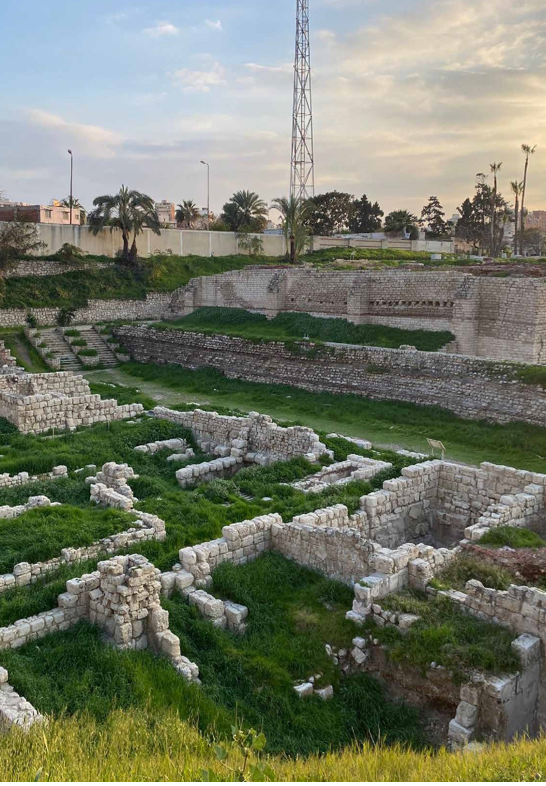
Monday 7 February
10:00 – 13:00
Group session
Institut Français d’Egypte (IFE)
As the first session of the week, nomadic residents and curators reflected on the week in Athens and shared their insights with local Alexandria residents.
Some of the themes explored were:
Water and sound as monuments; water as therapy; radio waves as decentralization of information; fiction and storytelling as alternative narratives to reality; uncovering the archive through micro-histories and objects; shared and particular mythologies of the Mediterranean region; migration and circulation of knowledge in the Mediterranean; mapping as a method.
14:00 – 16:00
Visit to El Labban and talk
Raya wa Sekina house
Visit to Raya wa Sekina house at El Labban and introduction to the neighbourhood with local resident,
Yasmine Hussein, researcher, art manager and artist based in Alexandria. What used to be the house of local
historical figures, female serial killers Raya and Sekina, is located in the El Labban district and currently inaccessible to the public. For this reason, we held the session across the building in a public space where we
gathered and talked about the history and repercussions of the Raya and Sekina murder case, which took place
in Alexandria in the 1920s in the context of colonialism and major changes in jurisdiction and public life in the city.
The El Labban area is a place filled with historical sites having been one of the main burial places for several Sufi saints.
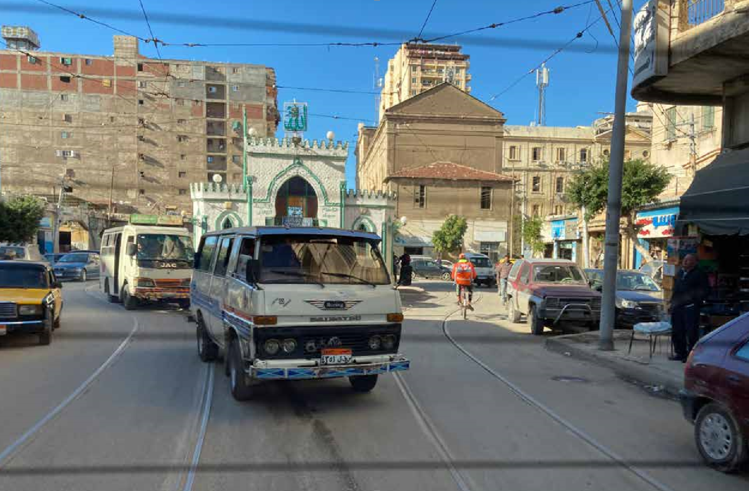
Tuesday 8 February
11:00 – 14:00
Visit to Centre d’Etudes Alexandrines
A visit to the archives of le Centre d’Etudes Alexandrines (CEA) and a conversation with Marwa Abdel Gawad
on the history of the Alexandrian Hydraulic system. This session deepened participants’ knowledge on the role that water has historically played in Alexandria, and the symbolic meaning water still carries for its residents.
The Byzantine cistern was built between the 5th and 7th century AD, which resemble underground cathedrals
due to their architectural splendor.
It wasn’t until the 19th century with new discoveries in the field of microbiology that they were closed as they were believed to be a spreader of bacterial infections in the city. The session also tackled underground myths, the
construction of mosaics, maritime exchange before the Suez Channel, an introductory talk to the archives and
cartographic collection of the Centre d’ Etudes Alexandrins
19:00 – 21:00
Live session and discussion
with Ahmed Saleh
The evening took place at local community centre B’Sarya, with a session led by local resident, musician
and producer, Ahmed Saleh, who spoke about his artistic process, and shared his music through a live performance at the recording studio. The session
was followed by a discussion around Ahmed’s experience of being a musician in the current Alexandrian music scene, and the changes that have taken place
since the political unrest intensified in recent years.
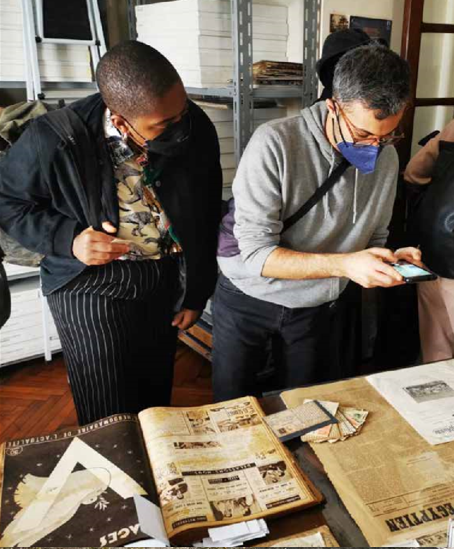
Wednesday 9 February
11:00 – 14:00
Presentation by local resident, architect
and artist Mohamed Adel Dessouki
Dessouki shared his work on the project ‘Save Alex’, which seeks to save heritage buildings in the city from demolition brought by rapid development by
reclaiming its infrastructure as a public asset rather than as a heritage based on nostalgia, often endorsed by the elites of the country. Through the creation of a fictive archive that reconstructs lost or untold narratives, the artist proposed an alternative story to the hegemonic
one promoted by government and private developers. This is exemplified in Dessouki’s work ‘Monument to the
Truth’, which seeks to fill in the gaps in the story of the life of Egyptian architect Naoum Chébib using archival materials, sketchbooks, videos, and sound.
16:00 – 19:00
Collective workshop
The rest of the afternoon was spent with local and nomadic residents exchanging their impressions on the city and their initial ideas for the works they will produce towards the upcoming public assembly in Athens in June 2022.
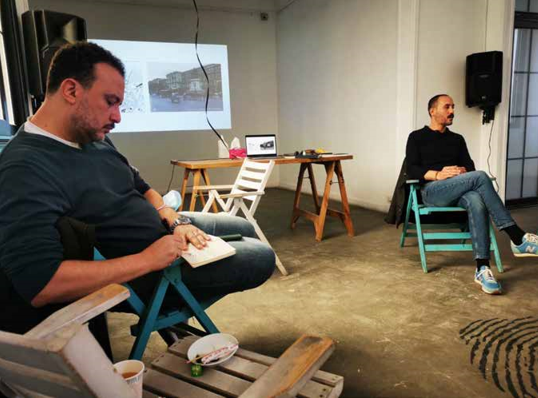
Thursday 10 February
10-00 – 13:00
Visit to the Kom El Shoqafa catacombs
led by Yasmine Hussein
Local resident, researcher and artist Yasmine Hussein led a guided tour of the Kom El Shoqafa catacombs, built in
a Graeco-Roman style, often combined with Egyptian elements, an example of the hybrid and syncretic beliefs of ancient Alexandria. They date from the end of the first century CE and signal the start of Christianity as a religious practice in the city, where underground
burial rituals and religious ceremonies were performed. On the sarcophagi visitors can see depictions of mythical
figures and gods in a variety of forms and motifs.
The rest of the afternoon was occupied by resident’s independent research of the city, including a visit to the archives of Behna Films in Alexandria dedicated to the conservation of films and related promotional materials of the heyday of Egyptian cinema from the 1930s until the 1950s.
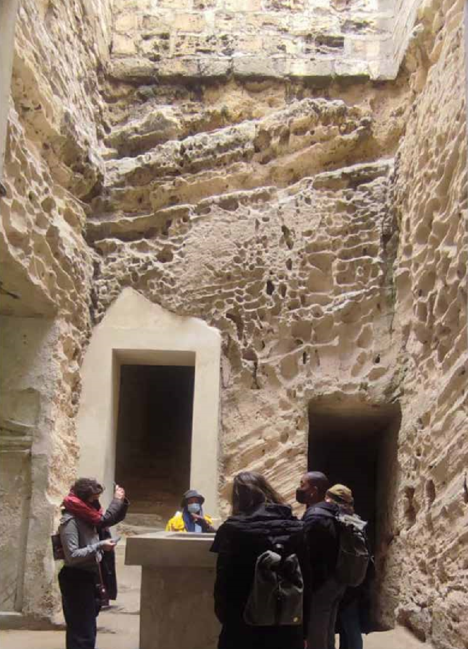
Friday 11 February
11:00 – 14:00
Presentation of Description of
Alexandria at B’Sarya
Architect Mohamed Gohar introduced his project initiated in 2013 ‘Description of Alexandria’, a cultural and artistic documentation study seeking to document the heritage of the city and its architectural and cultural memories, presenting a true and actual image of today’s Alexandria and the recollectionsof the past. The project also aims to engage locals in preserving their legacy
through long-term awareness. The presentation was followed by a group discussion with local and nomadic
residents.
16:00 – 17:00
Visit of Cavafy House
The team of the Hellenic Foundation for Culture invited the residents to visit the house of Greek Alexandrian writer Constantin Cavafy, which harbors a collection of artifacts and writings of the author tracing historical links between the two cities.
19:00 – 22:00
Dinner and listening session
hosted by Ozoz
The day culminated with dinner and a listening session hosted by local music collector Ozoz at his place. He shared his views on Alexandria through songs, focusing on community radio, vinyl, tapes, and folk songs in vernacular genres such as iskandarani, sa’idi, zaffa, masmudi kabir, aqsaq, and settat ashar.
Saturday 12 February
11:00 – 13:00
Reflections on the week
Planning session for next steps The last morning of the residency took place at IFE and was dedicated to a collective discussion with Theatrum Mundi curators the next steps of the residency as well as reflecting on the
weeks spent in Athens and Alexandria as local and nomadic residents prepare to showcase their works in the public assembly at Onassis Stegi, which will take place in Athens in June 2022.
18:00 – 19:00
Screening of Domestic Tourism
by Maha Maamoun
The final activity of the Alexandria residency took place at the cinema of the IFE, where the film Domestic Tourism II (Maha Maamoun, 2009) was screened. The metafilm is a collection of Egyptian films that have the Pyramids of Giza as a backdrop and reveal the diverse cinematic representations of the touristic site, and how they are implicated in Cairo’s ongoing negotiations and active struggle over the past and present.
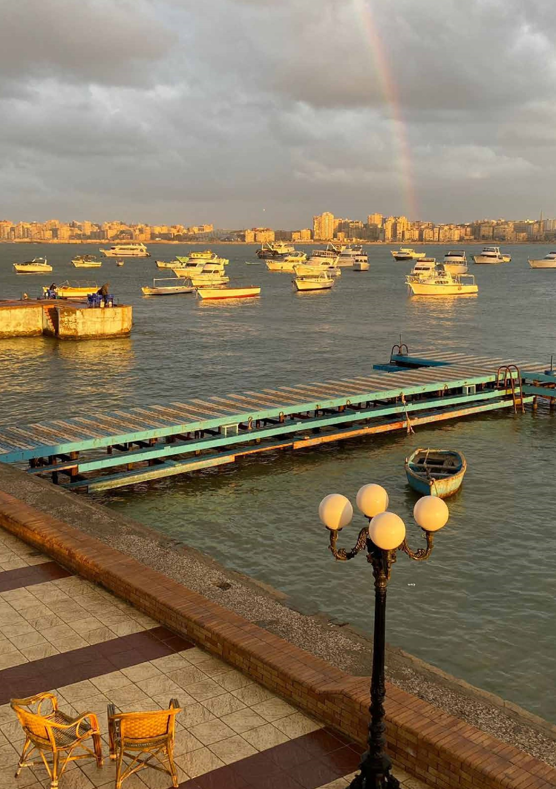
Overview of themes
Expanding on the core themes of the residency (sound as resonance and shared historical past, present and
future imaginaries in Athens, Alexandria and Marseille) new threads emerged during the residency week in Alexandria:
• The tension between the political imagination of utopia against a reality and history of defeat.
• Water as a source for circulation, cultural capital, merchants and its relationship to a colonial past.
Reflections on water grids and social class – the privatization of water.
• Mapping as a documentation method.
Possible collaborative outcomes and formats:
• A collective repository of sounds/ texts/objects which tell different nomadic stories that keep moving.
• A scent that evokes a feeling or memory in space to accompany an audio piece.
• Fiction as a way of reconstructing and imagining alternative realities.
• The need of reassessing the meaning of what an archive is and can be.
• The material identity of the mediterranean as an infrastructure of humans.
• Being a citizen of the Mediterranean sea; Mediterranean rather than national identity.
• Second city syndrome as a way of capturing the experiences of urban non capital residents.
• Mediterranean culture and religion as syncretism in the Levant.
• Toxic nostalgia: the dangers of living in the past and refuting progress as inevitable.
• A hybrid text and sound piece based on field recordings, sound piece accompanied by cartographic
mapping project.
• A radio day based in Marseille, compiling a soundbank related to a transmission system of transmitters that have content related to the SFSM that are all tuned to the same frequency.
• Piece for 3 voices – each voice based on one of the cities visited, mix of human and non human voices.
• Creating a character based on the sea and creating a mythology and folklore around this character – using this for the basis to write a series of poems, and potential sonic work
